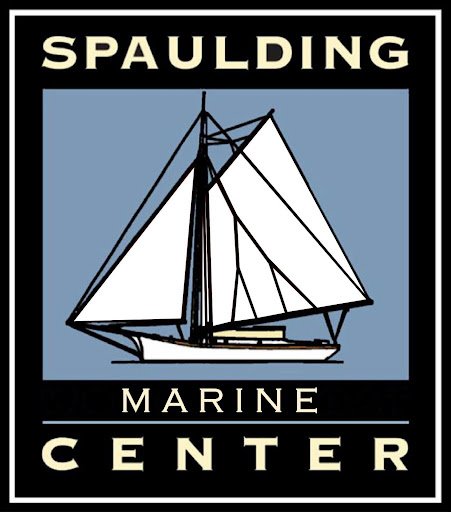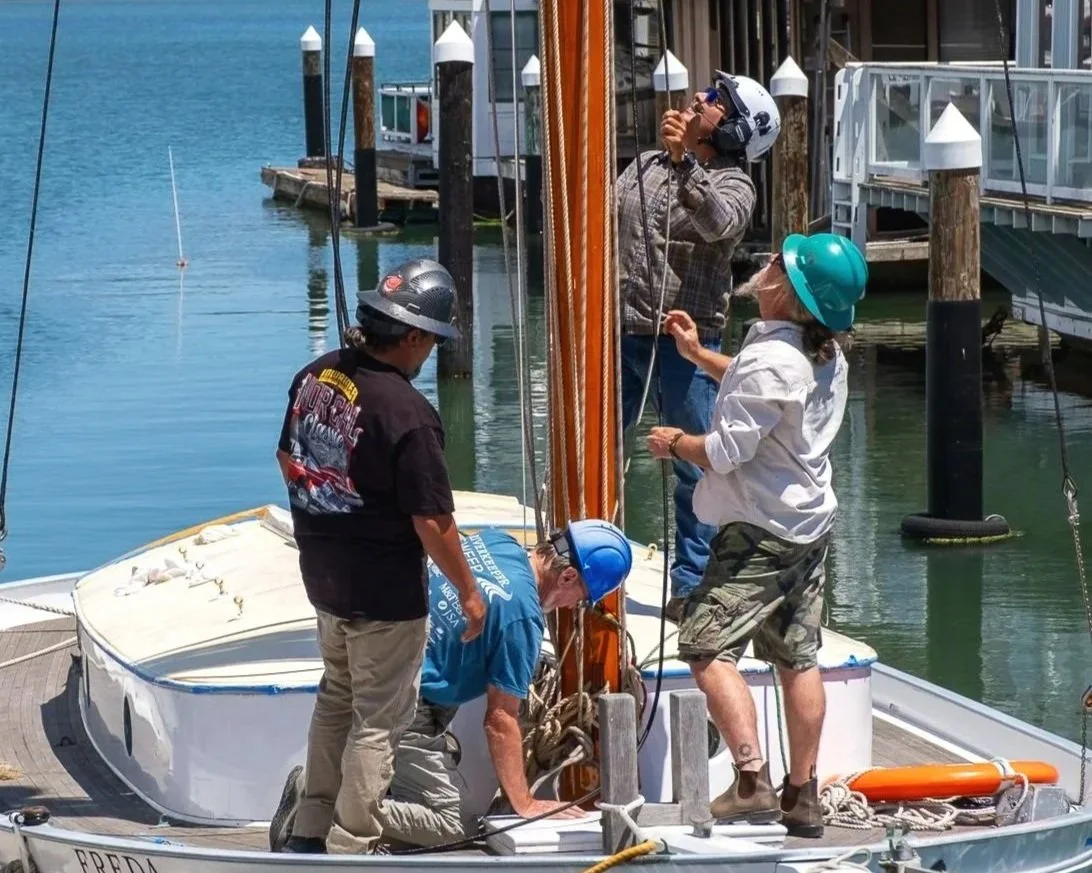Where Tradition Meets Tomorrow: A Rigger’s Story at Spaulding
By Courtney J Andersen - October 15th, 2025
My mom always said that Jimmy Buffett and I were the only two people who truly seemed to love and enjoy their work. Sadly, he is gone; so that leaves me to carry the torch.
I’ve worked as a rigger since 1994, mostly on replica and museum square-rigged sailing ships. My first experience in traditional sail was on Bounty, from the Marlon Brando movie, when I was at the University of Miami in 1988. I worked aboard as a tour guide, then sailed up the East Coast on a summer trip to New England. That experience hooked me, and I began a 35-year (and counting!) love affair with rope, blocks, deadeyes, wooden spars, and canvas sails.
Working on the Channel Galleon, the Golden Hinde.
I later apprenticed with a master rigger while working on the replica of Half Moon on the Hudson River in New York and researching 17th-century Dutch and English ship rigging. That led to jobs on various other boats, as well as designing and building the rigging for movie-set ships—including all “Pirates of the Caribbean” productions.
My career then brought me to San Francisco Maritime National Historical Park as the historic ship rigging supervisor in charge of all work from the deck up on Balclutha and Alma. I also researched, designed, and built (with my crew) the new rig for C. A. Thayer to match, as closely as possible, her original 1895 rig—the crowning achievement of my career so far.
Courtney on set with Captain Jack Sparrow a.k.a. Johnny Depp.
During 15 years at the museum, I lived on my 1966 mahogany Angelman ketch, Saphena, at Loch Lomond Marina in San Rafael. But after nearly two decades living in the Bay Area, it was only in January 2025—when Jason Rucker, my friend and former co-worker at SF Maritime, gave a talk at Spaulding Marine Center on Haida canoes—that I visited what has become one of my very favorite places on the Bay.
That first time stepping into Spaulding’s boatyard building felt like entering a cathedral. Wooden small boats and forms hung from the rafters. Masts and spars were lashed to wooden workbenches. And inside the large work area, a lovely, classic vessel was on the wide, thick, worn planks that make up the floor. All around were large planers, a ship saw, a steampunk drill press, and other tools used in boatyards back in the days when all boats were made of wood.
Courtney working on Freda’s rig at Spaulding - July 2025
I gave my card to a couple of people staffing the Spaulding event, hoping that some traditional rigging projects might come up. Lo and behold, Freda had been downrigged and needed someone with experience in traditional rigging, splicing, serving, and seizing. Right up my alley!
I worked with one of the apprentices to complete Freda’s rigging, in the process learning more of the history of the yard and what Myron Spaulding had built. While boatyard work is Spaulding’s backbone, its unique character lies in its educational component. Spaulding is a training facility that educates and nurtures a career path for young people and provides the knowledge to help them succeed. Apprentices are trained in all of a boatyard’s varied occupations: bottom and topsides prepping and painting but also marine electrical systems, basic carpentry, metalwork, and now rigging.
Another beautiful part of Spaulding is its active group of volunteers—who contribute to, become part of, and learn about maritime preservation. And Spaulding’s impressive library has materials on boatbuilding, maritime history, sailing and navigation, and Freda’s long history on San Francisco Bay.
Courtney and volunteer crew stepping Freda’s mast - August 2025.
As anyone who has observed the San Francisco Bay waterfront over the last decade, boat repair facilities have been shut down and gobbled up for development. And what has been lost is many-faceted: the skills needed to repair things, whether wooden boats or marine systems; the appreciation for the history and caretaking of a vessel that is 30, 50, 80, or, like Freda, 140 years old; the ability for boatowners to have some self-sufficiency and cost controls (Spaulding, for example, allows owners to work on their vessels while in the yard).
Spaulding Marine Center is a gem on the Sausalito waterfront, a reminder of the area’s dedication to vessels, traditions, skills, and people who ply the waters of Richardson Bay, San Francisco Bay, and the oceans of the world.
Please consider making a gift to the Spaulding Annual Fund. By contributing to the fund, you will play a crucial role in helping Spaulding generate more enriching experiences for individuals of all ages.






